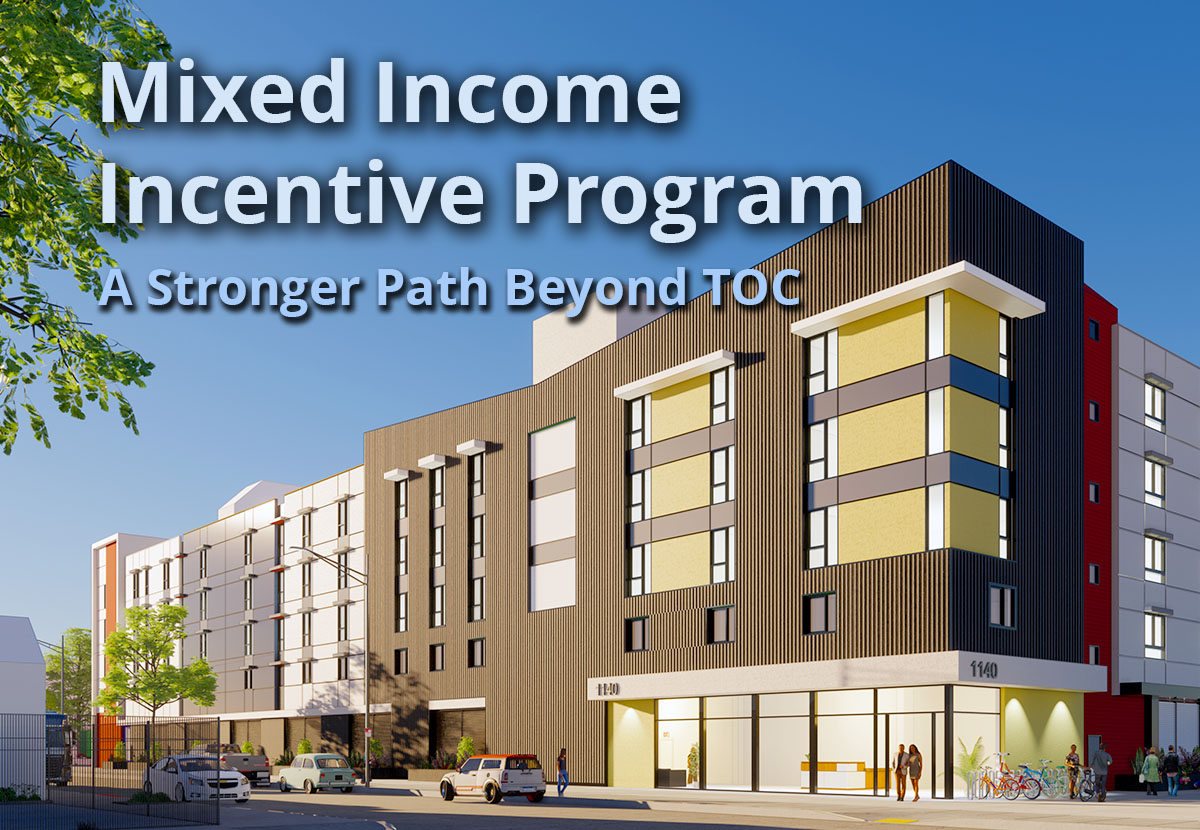Los Angeles’ New Mixed Income Incentive Program (MIIP)
Los Angeles’ New Mixed Income Incentive Program (MIIP):
A Stronger Path Beyond TOC
The City of Los Angeles has officially codified a new housing incentive framework, the Mixed Income Incentive Program (MIIP), a comprehensive update to the city’s incentive zoning tools. Building on the foundation of the Transit Oriented Communities (TOC) program, MIIP offers broader eligibility, stronger incentives, and more flexibility for developers aiming to create mixed-income housing in both transit-rich locations and higher opportunity areas.
At PQNK, we see MIIP as a pivotal tool that will reshape the city’s development landscape, expanding the possibilities for both market-rate and affordable housing projects.
What is the Mixed Income Incentive Program (MIIP)?
MIIP was created to meet state density bonus requirements while addressing Los Angeles’ local housing challenges. The program is designed to:
- Expand affordable housing production in high-opportunity areas and near transit.
- Incentivize mixed-use and adaptive reuse projects, especially along major corridors.
- Streamline approvals by allowing many projects to proceed ministerially through the Department of Building and Safety.
To qualify, projects must:
- Include a minimum number of total units (generally 4–5+ depending on project type).
- Provide a required percentage of Restricted Affordable Units at income levels ranging from Extremely Low Income (ELI) to Moderate Income, depending on location.
- Be located in designated areas: Transit Oriented Incentive Areas, Opportunity Corridors, or Opportunity Corridor Transition Areas.
Key MIIP Incentives
Developments that meet eligibility standards can access Base Incentives and Additional Incentives:
Base Incentives (depending on location and tier)
- Density Increases: Up to 120% above base density.
- Floor Area Ratio (FAR): In commercial zones, FAR increases up to 4.65:1 (or 55% above base).
- Height Bonuses: 3 additional stories (up to 33 feet).
- Parking Reductions: Often no parking required.
- Relief from Road Widening.
Additional Incentives (up to 4 per project)
- Yard/setback reductions.
- Transitional height relief.
- Open space recalculations (15% of lot area instead of per-unit formulas).
- Averaging of FAR, Density, Open space, Parking.
- Relief from other development standards (up to 20%).
- Exemptions for active ground floor uses (retail/service) from FAR calculations.
Public Benefit Options
Projects that integrate community-serving features can gain further incentives, such as:
- Child care facilities.
- Preservation of significant trees.
- Multi-bedroom unit bonuses (encouraging family housing).
- Privately Owned Public Spaces (POPS).
How MIIP Compares to TOC
While MIIP draws inspiration from the TOC framework, it broadens eligibility and deepens benefits:
|
Feature |
TOC | MIIP |
|---|---|---|
|
Geography |
Limited to sites within ½ mile of Major Transit Stops |
Includes Transit-Oriented Areas, Corridors with frequent bus service, and Higher Opportunity Areas (not only transit) |
| Affordability Mix | Mostly Very Low Income requirements | Flexible options: ELI, VLI, LI, and Moderate tiers based on location and project type |
| Incentives | Density, FAR, Height, Parking | All TOC incentives plus additional FAR bonuses, setback/yard relief, open space recalculations, POPS incentives, and corridor-based bonuses |
| Streamlining | Ministerial only for TOC tiers | Broader ministerial approvals through LADBS + Expanded Administrative Review |
| Adaptive Reuse | Not directly included | Explicitly includes Unified Adaptive Reuse Projects with affordable housing requirements |
| Corridor Strategy | No direct corridor provisions | Strong focus on Opportunity Corridors and Transition Areas, expanding mixed-income housing along major streets |
In short: MIIP is TOC Plus. It keeps the successful core of TOC but expands it to more areas of the city, provides more flexibility for different market conditions, and adds a stronger toolkit of development incentives.
Why MIIP Matters
For Los Angeles, MIIP represents a strategic evolution in land-use policy:
- Encourages housing production citywide, not just near rail stations.
- Aligns with equity goals, targeting higher-opportunity neighborhoods.
- Simplifies the process for developers by broadening ministerial approvals.
For developers, architects, and communities, MIIP offers a more powerful playbook than TOC. At PQNK, we are tracking MIIP closely and advising our clients on how to leverage MIIP incentives effectively, especially when evaluating multifamily, mixed-use, and adaptive reuse opportunities.
If you’re considering a housing project in Los Angeles, now is the time to explore how MIIP can shape its feasibility and impact.
For professional guidance on multi-family housing development, feel free to reach out to PQNK INC. PQNK is a leading Korean-American architecture firm in Southern California specializing in multifamily residential, commercial, food & beverage, and healthcare design.

